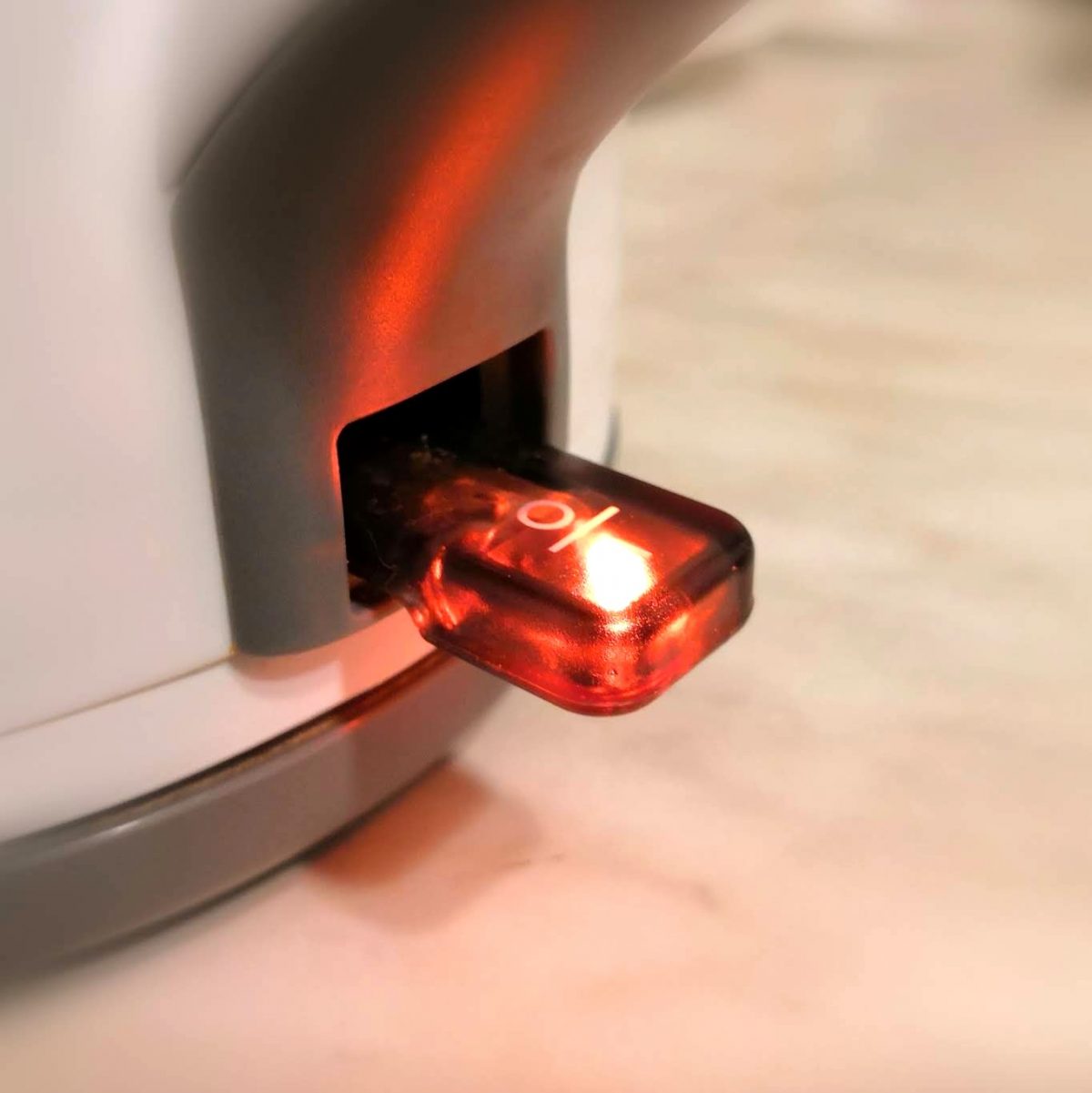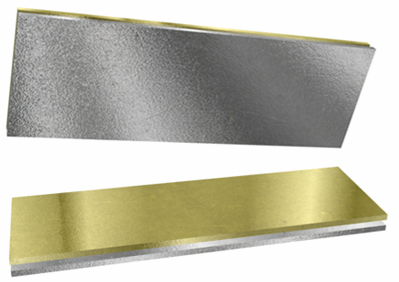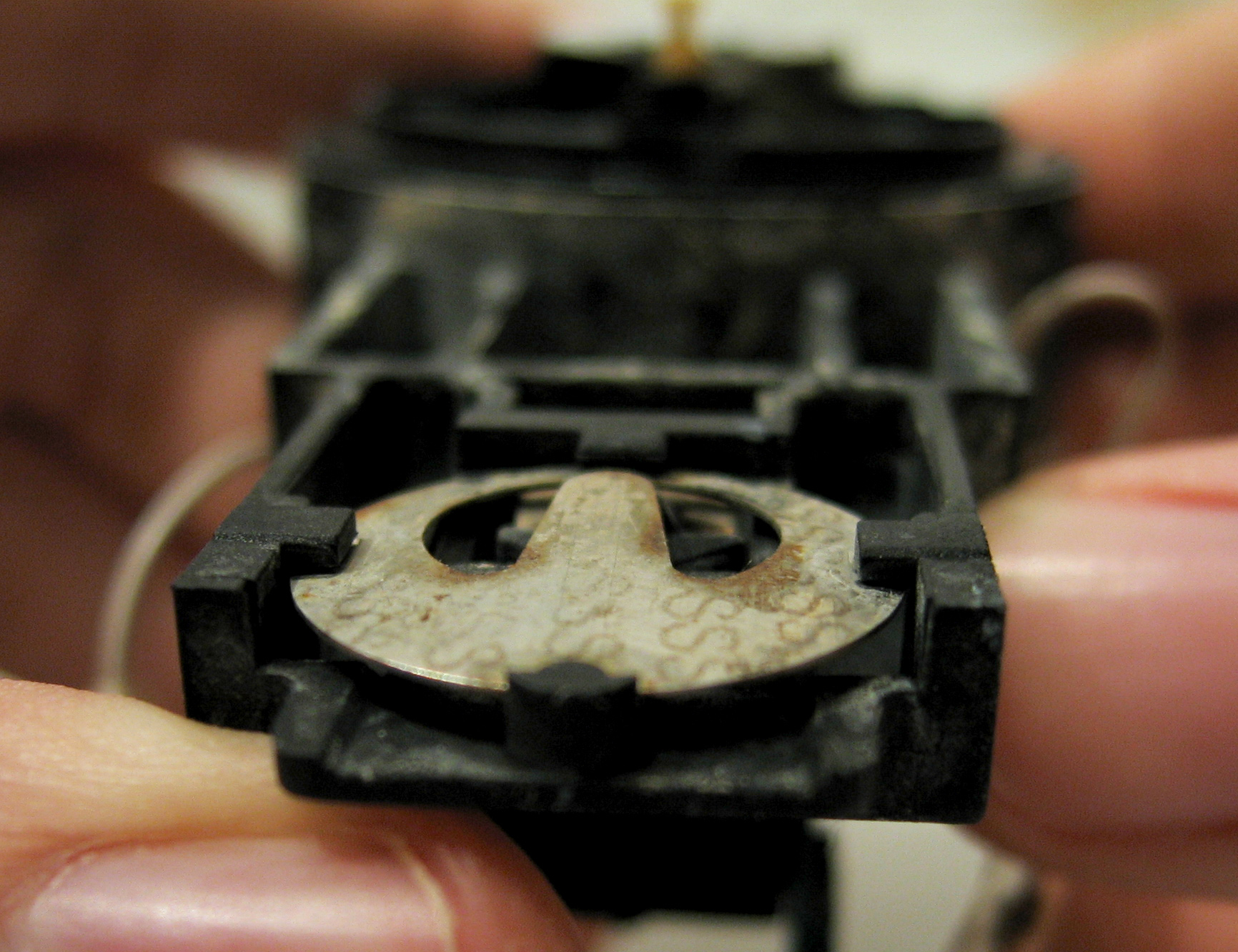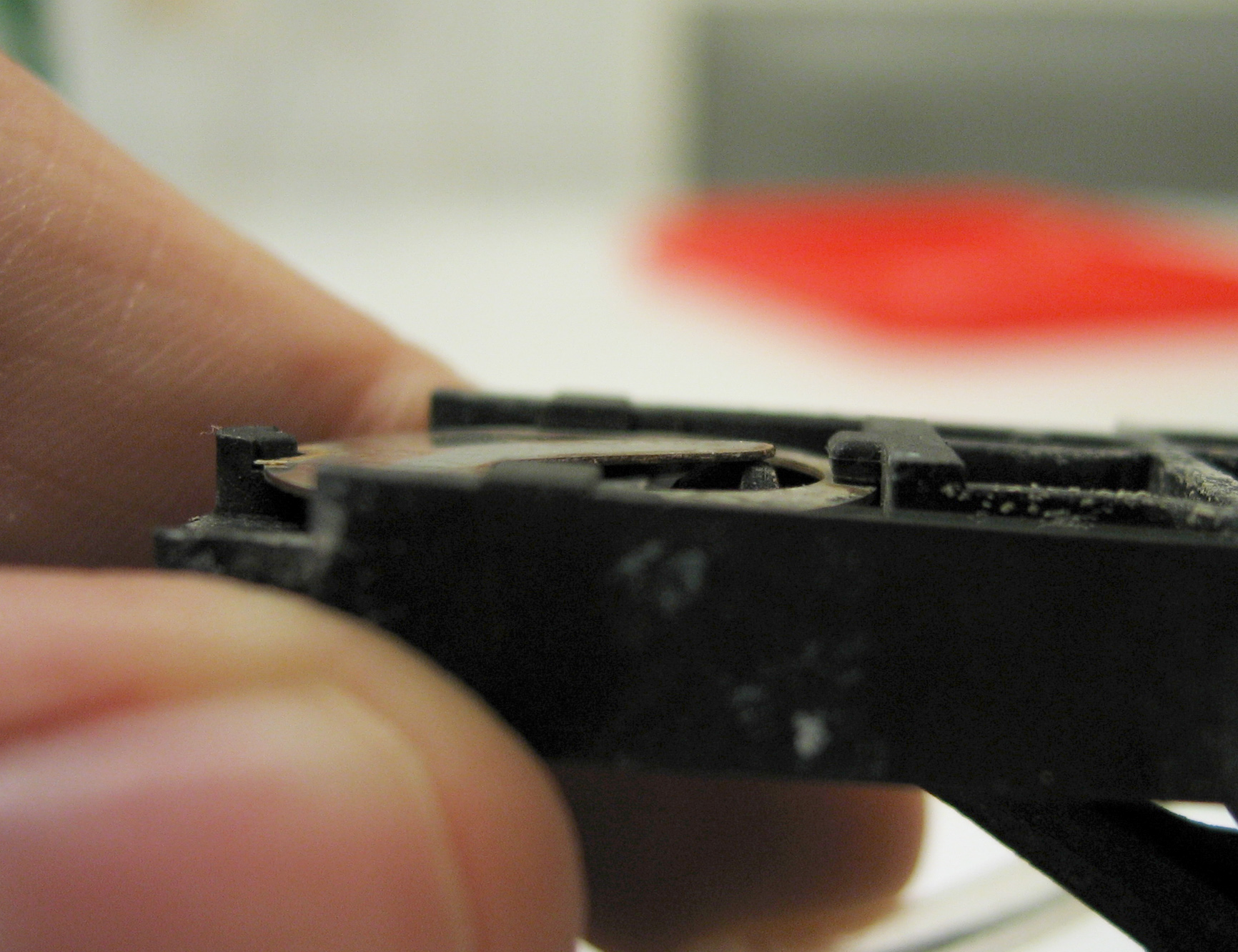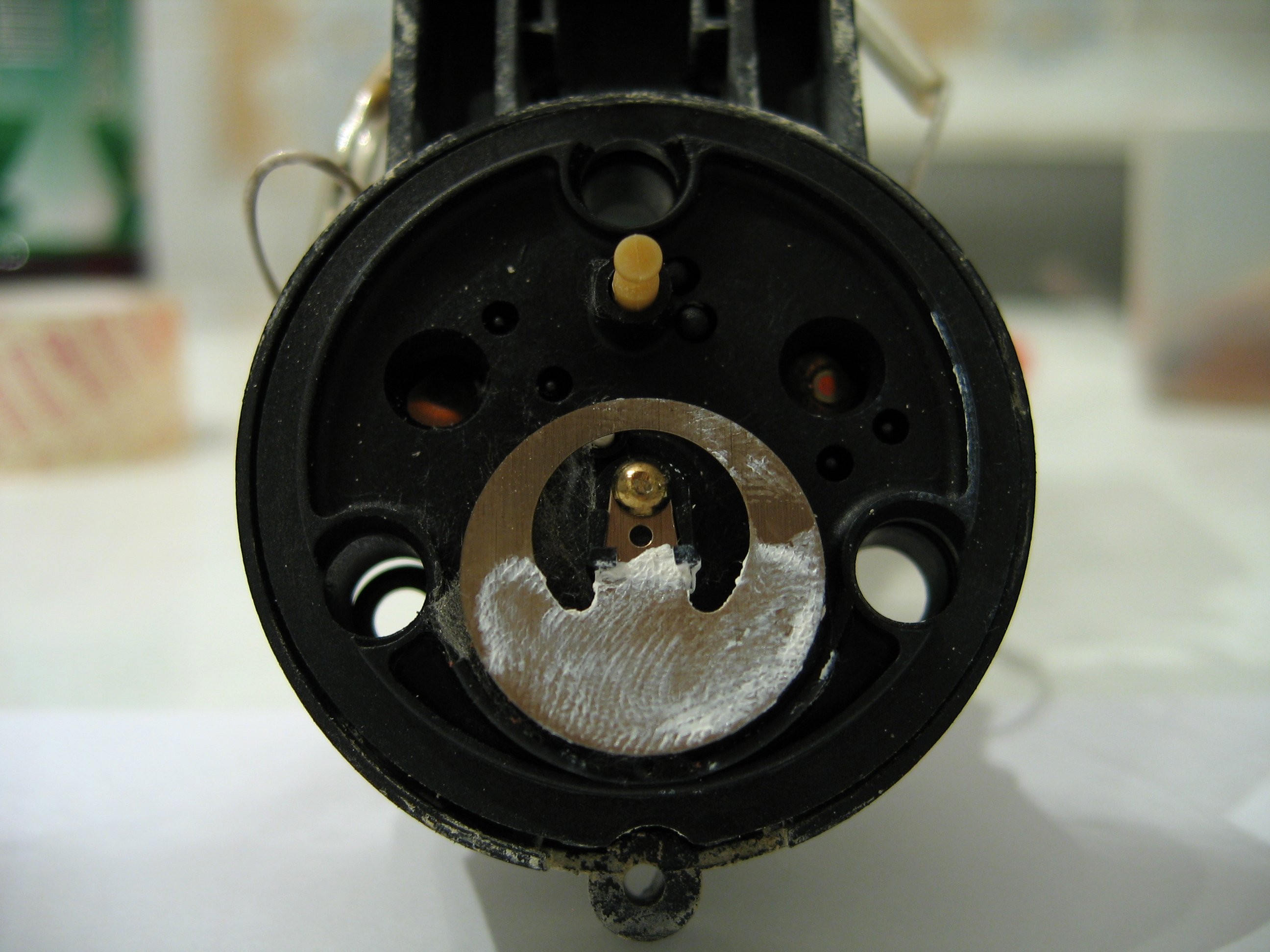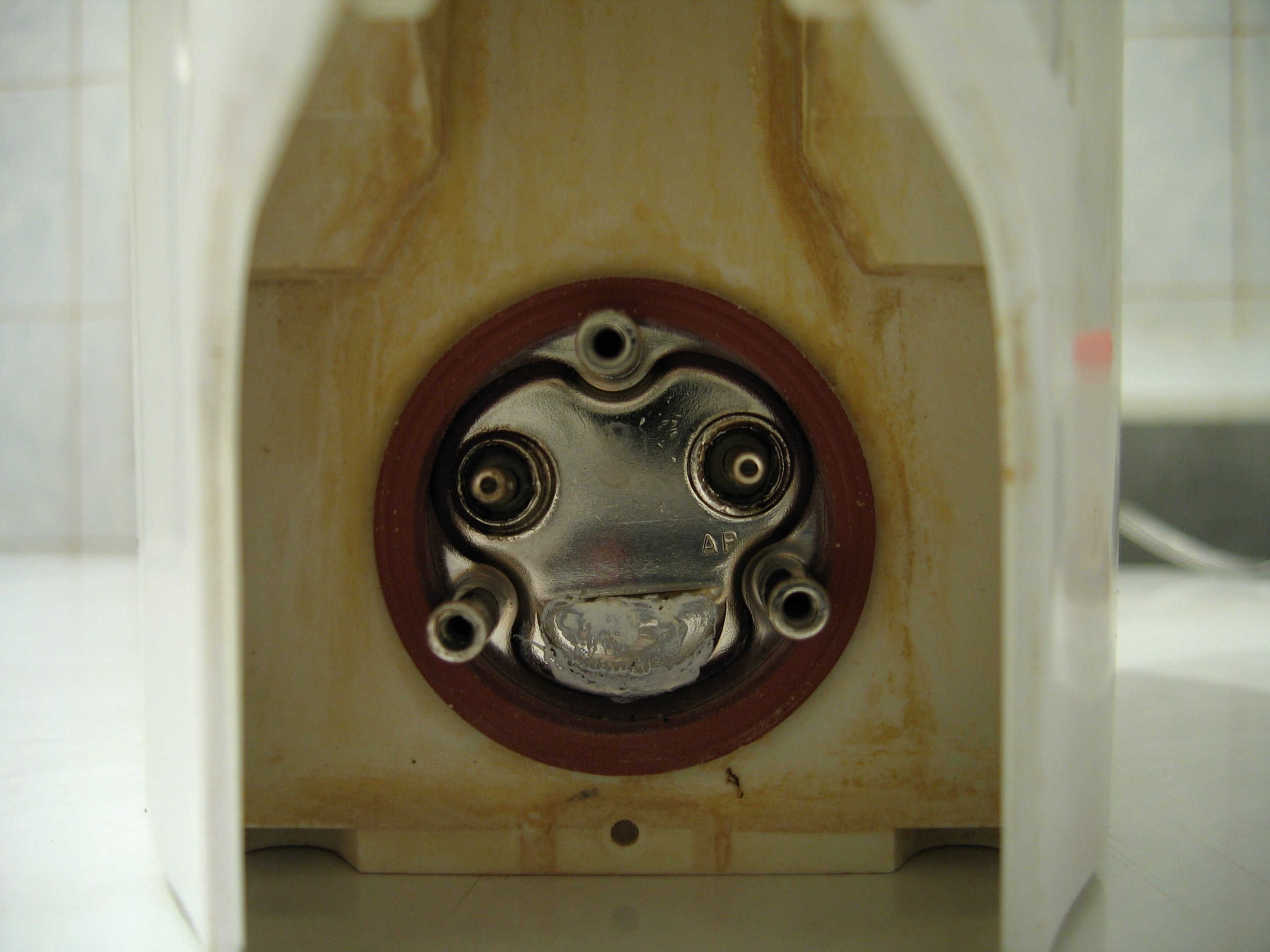Have you ever thought about how a kettle turns off when it boils? Or maybe, how it turns off when you forget to pour water into it?
It there any thermometers? Not quite.
To understand what actually clicks inside, let’s take two separate plates of the same size but made of different metals. One of brass and other of steel:
… and heat them:
What is the reason that they have increased by a different amount?
The key is a coefficient of linear thermal expansion. It’s 19×10-6 K-1 for brass and about 12×10-6 for steel. That means that if both plates are heated the same degree, the brass plate expands 1.5 times more than the steel one.
Now, let’s weld these plates together and heat them again. The brass piece still tends to expand more than steel one. And since they’re welded, we gonna see the following picture:
Here we can see one of the properties of bimetallic objects — they change their shape when heated. It’s useful in many appliances, e.g. in mechanical clocks, thermometers, thermostats, etc.
But let’s get back to our kettle. What does it consist of?
The body, the heating element and… some electronics? Wait, we’ve already known about bimetals, so no semiconductors are needed. It’s controlled by two small plates:
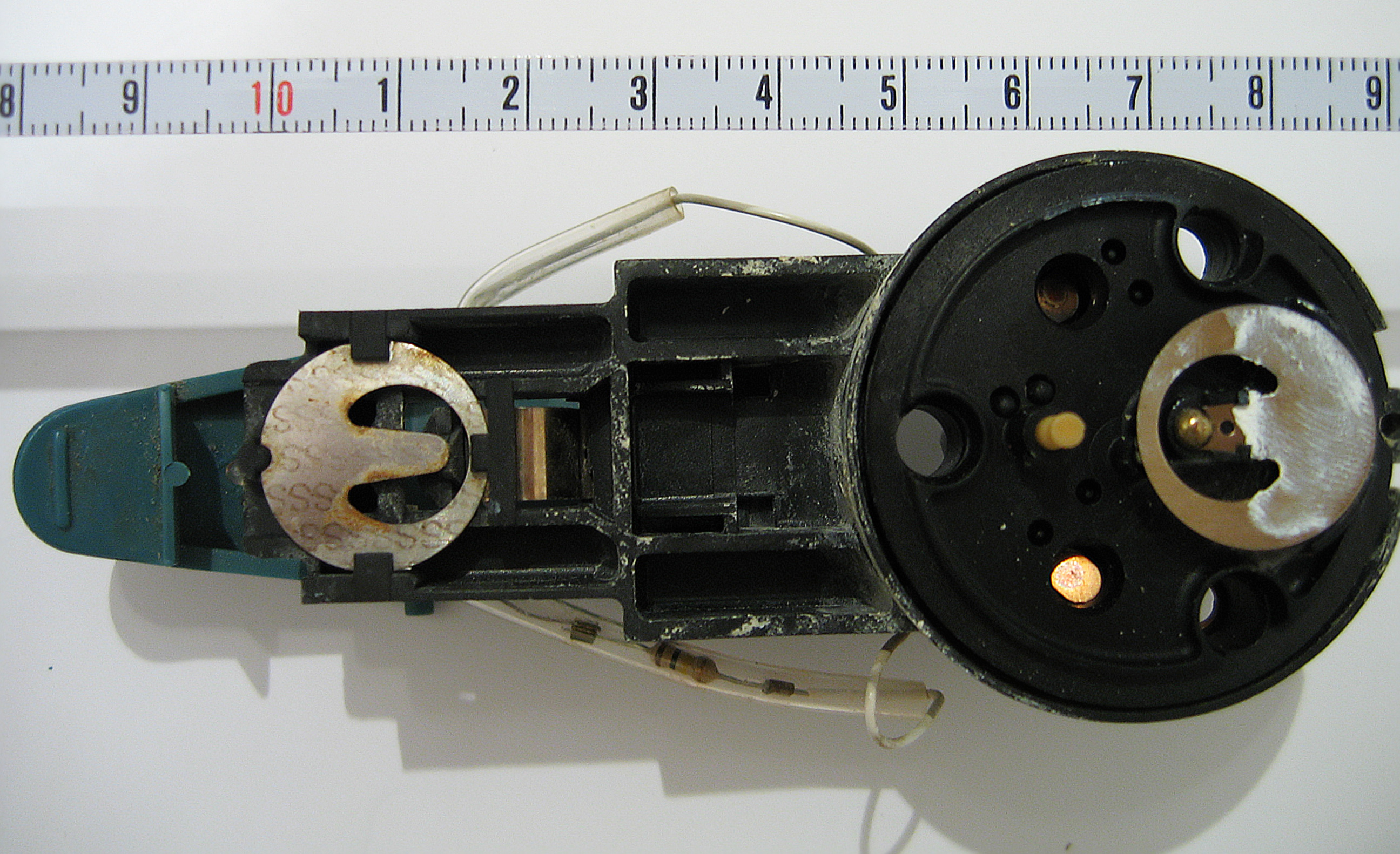
This one comes into action when water boils:
As you can see, when you press the button, the plate curves and closes electrical contacts. When it’s heated enough, it curves back and breaks a circuit.
But there’s no need to fine-tune the characteristics of the plate to make it turn off the kettle exactly at 100 °C (212 °F), as it doesn’t contact the water. It’s heated by steam that passes through the hole under the lid.

The temperature doesn’t matter because steam appears only when the water boils. Pretty smart device, huh? It will work just fine even on Everest, where the water boils at 68 °C (154 °F).
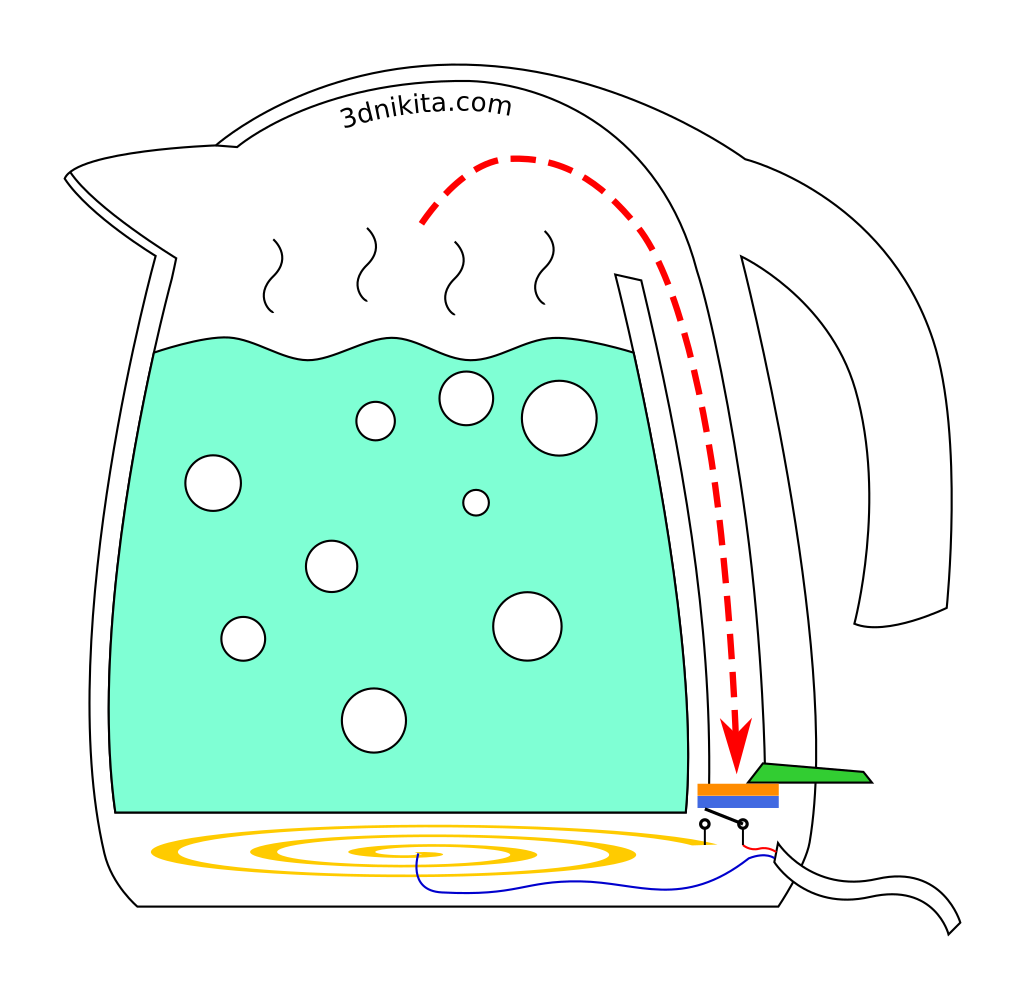
The second plate contacts the heating element. It prevents overheating of the element in case you turned on the empty kettle and saves your kitchen from the fire.
That’s why you sound a click in this case and why you can’t turn the kettle on again for a next few seconds — the bimetal plate needs some time to cool down enough to curve back.
And despite these photos are 15 years old, be sure – your new shiny Wi-Fi kettle works the same, even if its thermostat looks differently.
